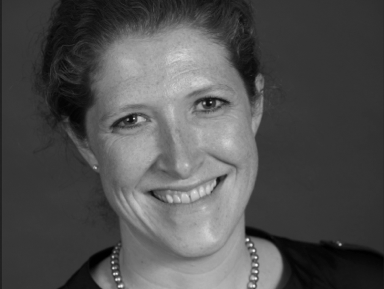Financial Crime Fighters of the 21st Century
Discovering the secrets behind financial crimes and their prevention.
Subscribe
Subscribe

Financial crimes and their prevention
4 min read
Our Mission
In the Netherlands alone, over EUR 16 billion is laundered annually 1 , with a further EUR 5-9 billion in Belgium and Luxembourg 1 . Regulatory and financial institutions are under immense pressure to protect the money, comply with regulations and find the suspects of financial crimes. Furthermore, news of money laundering violations reaches newspapers weekly.
However, who are the true faces protecting our money and fighting financial crime? What techniques do they use, and do they still have Watson by their side?
Gather a peek into the world of the financial crime fighters of the 21st century. Dasha and Misha talk to the biggest players in anti-money laundering (AML) and counterterrorist financing (CTF) about their daily battles and share their vision on the future of financial crimes prevention.
Financial crimes and their prevention
What is financial crime, and can you pay in cash? Financial crime is committed daily across the globe. It is challenging for law enforcement entities to detect and monitor financial crimes. Financial crime entails the involvement of illegal conversion of property ownership, most often for personal gain. It can include fraud, money laundering, terrorist financing, tax evasion, forgery and many additional forms of crime. Authorities, banks and innovative tech companies are working together across the globe to fight financial crime and to prevent criminals from accessing illicit funds to conduct criminal activity. Without this financial support, criminal organizations will have trouble surviving. Therefore, it is vital to resolve this challenge together.

Money laundering
Let’s take money laundering as an example. Money laundering is defined by the Dutch Police as: “the conduct of transactions to conceal the origin of illegally obtained money” and “concerns money from criminal activities such as drug trafficking, human trafficking, theft, and social and fiscal fraud.” 2 It contains three main steps: placement, layering, and integration.
- Placement: The processes of first using the illicit cash to buy products, services or deposit the cash at a financial institution. This represents the first stage of the money laundering process.
- Layering: In the process of distancing the connection with the illicit cash, the money launderer then moves the cash through multiple layers (such as transactions to different companies, countries). This represents the second stage of the money laundering process.
- Integration: This layered money is then integrated into the financial system for legitimate use. This represents the third and last stage of the money laundering process.
In the Netherlands alone, over EUR 16 billion is laundered annually 1 , with a further EUR 5-9 billion billion in Belgium and Luxembourg 1 . Criminals are constantly seeking new ways to launder money through cryptocurrencies and complex international company structures. At the same time, penalties totalled USD 10.6 billion worldwide in 2020 3 . Hence, banks and authorities are under pressure to report, investigate, and catch the criminals.
Illegal operations are driven by criminal organizations and individual networks, with 90% of laundered money coming from drug trafficking and fraud¹
Which stakeholders operate in the landscape?
Financial institutions are involved in the role of the gatekeeper. Money launderers use these gatekeepers, such as banks, to place their illicit cash into the financial system. Therefore, financial institutions have the responsibility to report suspicious transactions to government bodies and investigators. Due to new regulations and policies imposed by regulators, financial institutions are under an increasing pressure to comply.
To support AML and CTF programs, many tech companies and RegTech innovators joined the financial crimes prevention field to find the newest techniques to detect financial crime.
Generally, goals of AML programs are threefold:
- Preventing money laundering and terrorist financing
- Reporting suspicious transactions and activities
- Training of the employees on the legal procedures and the importance of the topic.
Nevertheless, financial crime can’t be solved by only one party. Collaboration of various commercial and non-commercial institutions is key in solving this issue. Examples in the Netherlands include Transaction Monitoring Netherlands (TMNL), a collaboration between five major banks in the Netherlands to monitor suspicion transactions. Another example is Financieel Expertise Centrum (FEC), a partnership between a variety of institutions that fight financial crimes, including supervisors, prosecutors, investigators to strengthen the integrity of the sector and take preventive action.
- The supervisors, as the name says, supervise financial institutions to make sure they are compliant with regulations and follow the correct procedures to combat financial crimes. For example, in The Netherlands the central bank, The DNB (De Nederlandse Bank) supervises banks, exchange institutions, life insurers, trust offices, payment services, electronic money institutions and leasing companies. Additional supervisory institutions include the AFM (including investments) and Nova (for lawyers).
- The investigators receive suspicious transactions from the financial institutions. The Financial Intelligence Unit (FIU), which is part of the Dutch Police, is the only WWFTE-eligible institution to which suspicious transactions are reported. The FIU further investigates these transactions to present the most egregious actors to the prosecutors.
- The prosecutors, including the Openbaar Ministerie (OM), are responsible for the prosecution of the criminal actors responsible for the suspicious transactions.
- The legislators and policy makers including the Ministry of Finance and JenV, create national policies to prevent financial crimes. Further, international collaborations between countries exist to combat financial crime, including the Financial Action Task Force (FATF).
Our guests and episodes
6 min read
In the Netherlands alone, thousands of people are fighting financial crimes. Who are the people protecting our money and preventing these financial crimes?
We talk to the biggest players in the field, including NVB, established banks, FinTechs, criminal organisations and governmental institutions. The discussions reveal colorful perspectives about how the future of AML and CTF looks like. We are pleased to share the stories of our distinguished guests.
Meet a few of our inspiring guests:

Jocelyn is the Global Screening Lead at ING, responsible for all elements of screening. She has previously held the positions of Global Head of Sanctions, Anti-Bribery and Corruption (ABC) and Gifts and Entertainment (G&E), Head of Financial Crime Screening and OFAC Officer roles at Barclays. Jocelyn has extensive experience in designing and implementing Sanctions, ABC and Anti-Money Laundering (AML) strategies and operating models, especially in relation to screening/filtering technologies. She is a respected expert on Sanctions and Screening within industry groups, providing thought leadership and contributing to publications.

Since 1 January 2019, Robin is responsible for Detecting Financial Crime. This is a first line function in which the control on the financial crime risks is being monitored of ABN AMRO globally. Robin brings 24 years of experience in program management, risk management, product management and audit. Untill the start of 2019 he was the head of the department Process and Control for retail with a strong focus on care. Before that he was leading the extensive CDD recovery program at Private banking. He was doing internal research on the Panama papers based on the press-released articles.

Valentino is the co-founder and director of AMDAX and has long been building a bridge between the traditional financial and cryptocurrency worlds. With an academic background in both business and psychology, he started his investment and trading career at a young age in the early Bitcoin days and has followed the progress of the field ever since. Valentino also has a background in investment banking, product development, operations, and sales, and nurtures a long-standing interest in human enhancement (cognitive, technological, and biological) in his rare moments of leisure.

Markus Schulz is the deputy global head Financial Crime Compliance (FCC) and global head FCC Change Management at ING. In his current role he looks after the transformation of the Bank’s financial crime control and organizational framework with a special focus on RegTech. He is a trained banker by trade and has over 25 years of experience in Financial Services and since the early 2000s dedicated to the fight against financial crime working for a number of global Financial Institutions.

Wim Mijs (1964) was appointed Chief Executive Officer of the European Banking Federation in 2014. Between 2007 and 2014 Wim served as CEO of the Dutch banking association NVB. During this tenure, he transformed the NVB into a modern industry association, positioning it as the key representative of the banking sector in the wake of the financial crisis.

Enforcement at the same time he is Vice Dean and Research portfolio holder of the Faculty of Law, at the VU. He researches organized crime and the interaction between the criminals and the detection or prevention of crime. Since 1996 he is involved in a long-term research project called: “Monitor Georganiseerde Criminaliteit”. It focuses on the organized crime in the Netherlands founded on analysis of large-scale criminal investigations. Recent publications include the following topics: Cyber Crime with Phishing and Malware, money laundering and the question what technological developments mean for criminal collaborations and investigations.






Listen to our local podcasts:
Do you have any questions or suggestions for our episodes?
The hosts
2 min read
Our Services
4 min read
The continuously changing landscape of financial crimes requires expertise in both domain knowledge and the state-of-the-art technological developments. IBM supports our client in this field with the following services.
Misha Krung
Client Partner | Banking
IBM Global Business Services
Other IBM podcasts
2 min read
Find a few of our other IBM podcasts below.
Hear analysis and insights from hundreds of the brightest minds in the cybersecurity industry. The podcast can help you prove compliance, grow business and stop threats.
Discover information about new capabilities and releases on IBM Cloud. The podcast is hosted by Ian Lynch and Steve Choquette from the IBM Cloud team.
Get analysis and insights from hundreds of the brightest minds in the industry. The podcast can help you prove compliance, grow business and stop threats.
Making Data Simple provides the latest thinking on big data and AI, and the implications for a range of experts. The podcast is hosted by Al Martin, IBM VP of Data and AI Development.
Prof. Dr. Edward Kleemans is a professor of Serious and Organized Crime and Criminal Justice. What careers can criminals have in financial crimes and what can we learn from them to prevent it?
Robin de Jongh, ABN AMRO, takes us through the perspective of the gatekeeper and shares what areas we need to develop and what future skills we need to tackle this challenge.

